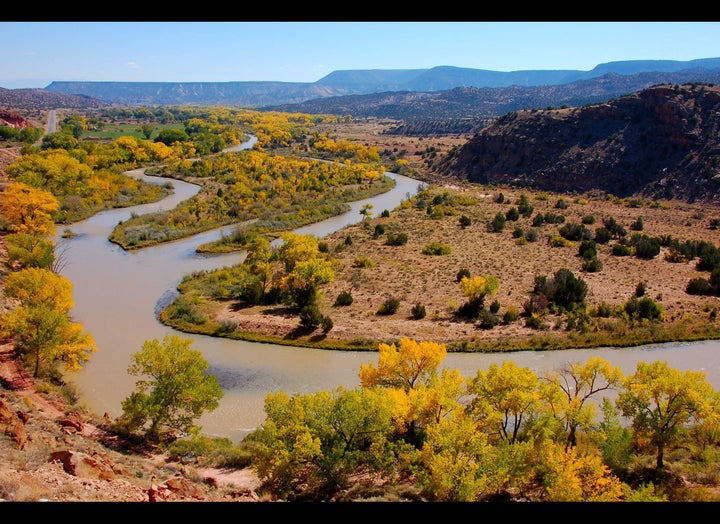
From the looks on the faces of the kids and the cheers and applause from everyone in the audience at an announcement I attended last week, it is clear that something unusual and important is happening in Albuquerque.
I stood at a podium with Interior Secretary Ken Salazar as he announced the creation of a new National Wildlife Refuge, on the banks of the Rio Grande in southern Albuquerque, New Mexico.
I know it wasn't the first time the Secretary has done that. But as I looked out at both the landscape and the audience, I was sure it was the first time he announced a refuge which sits in the heart of a low-income community and on a former dairy farm. And his announcement came at a celebration attended by dozens of fifth graders from the local elementary school, and was heralded by federal state, county and city leaders, and cheered by local community organizations.
The Middle Rio Grande National Wildlife Refuge will become a full reality when The Trust for Public Land has the federal and local money to buy the 570-acre former dairy so that the land can be restored and opened to the public.
People will be as much a part of this refuge as sand hill cranes and silver minnows. The refuge will be a portal to nature for children and adults in the surrounding low-income community, which for years has had the short end of the environmental justice stick.
President Obama's "America's Great Outdoors" initiative has a strong focus on people and cities as the critical elements in 21st-century conservation. The new refuge in Albuquerque shows that commitment.
And finally, these wonderful and essential investments can only be made when the resources are there -- and the federal Land and Water Conservation Fund is one of the most important sources of funds to make possible this and other important public land protection efforts. For almost a half-century, the fund has received money paid to the federal government by private companies who lease federal lands for oil and gas drilling. Thus, it receives no taxpayer money.
But nonetheless, this program, one of the most effective in the entire federal government, is very much at risk in the congressional debate over federal spending. And the debate isn't just abstract -- failure to approve LWCF money would put at risk the wonderful new refuge in Albuquerque, and all the other projects like it across the country.
